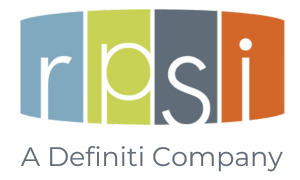Plan Sponsor Outlook – 1st Quarter 2022
Good Vibrations
A recent survey of retirement plan participants shines a light on their positive perspectives — which can help inform plan changes you may be considering.
Released in October of 2021, American Century’s 9th Annual Survey of Retirement Plan Participants found that more workers are optimistic about their futures in 2021 than they were in 2020. Not surprising, following more than a year of dealing with the pandemic, participants are now more positive about saving, risk and expectations. Because it’s the start of a new year, now may be an opportune time to discuss the findings with you plan advisor as you consider any plan design changes or adding features that may help improve retirement outcomes for your employees.
Optimism is trending up:
- Fifty-two percent of survey respondents expect their retirement lifestyle to be about the same as it is now.
- Three in 10 expect their retirement lifestyle to be better than it is now.
- More Millennials expect their retirement lifestyle to be a little or much better than it is now.
However, concerns about running out of money in retirement are felt by workers of all generations and regrets about saving are still felt by many:
- Not saving enough was the #1 regret (especially, as you might expect, among those with less savings)
- Those with more assets are more likely to regret not taking more time to enjoy life.
As in past years, the overwhelming majority of workers see the value of their retirement plan benefits. Many welcome automatic features to give them the “kick in the pants” or “slight nudge” they are looking for from employers:
- More than 6 in 10 support auto enroll and annual auto increases
- Four in 10 say retirement plans should be automatic for all
- Ninety percent of respondents say their retirement plan is a top benefit
- Two in 3 prefer an employer match over a raise, regardless of percentage
- Two in 3 support auto enroll at 6%
- Three in 4 would leave money in the plan if it had specific investments for retirement withdrawals
- Seven in 10 need a little guidance on withdrawals for retirement
- More than half are interested in environmental, social and governance (ESG) funds
- Two in 3 would be more interested in ESG funds if performance was comparable
- Market risk is a top concern, although only slightly more than longevity.
To download a presentation of American Century’s survey findings, go to: https://tinyurl.com/pte2v3ka.

Combatting Cybersecurity Threats
Nearly one-third of retirement plan recordkeepers expect to increase their cybersecurity staff, according to a recent survey.
According to findings in the latest Cerulli Edge U.S. Retirement Edition, the threat of retirement account fraud has increased in recent years — particularly during the remote work environment. As a result, 31% of plan recordkeepers intend to increase staffing capacity to address cybersecurity initiatives.
According to the Cerulli report, the Internet Crime Control Complaint Center of the Federal Bureau of Investigation reported 791,790 cybercrime complaints in 2020 — a 69% jump in total complaints from 2019. Cybersecurity crimes in 2020 resulted in financial losses of more than $4 billion. Although many recordkeepers have not experienced a data breach yet, many believe it’s just a matter of time as the techniques employed by cybercriminals get more sophisticated. One fraud surveillance expert at a large defined contribution (DC) recordkeeper suggested to Cerulli that older participants tend to be the most frequent targets for cyberattacks, partly because they typically have higher account balances than younger employees, but also because criminals may perceive them to be less technologically savvy than younger participants.
Implementing new technologies, such as biometric log-in credentials like thumbprints or facial recognition, is one part of building an effective cybersecurity practice. To prove effective, Cerulli suggests that providers will need to play an active role in encouraging participants to adopt these technologies and enhance the security of their accounts and personal information on their own. Moreover, recordkeepers should look to evaluate the cybersecurity practices of the service providers with whom they exchange or share participant data.
In April, the U.S. Department of Labor (DOL) released cybersecurity guidance for recordkeepers, plan fiduciaries and participants. The guidance includes tips for plan sponsors to evaluate the cybersecurity practices of recordkeepers and other retirement plan service providers and tips plan sponsors and/or service providers should relay to plan participants for their part in keeping their accounts safe (in June, the DOL began conducting retirement plan cybersecurity audits). In addition, the SPARK Institute published cybersecurity best practices last July, which provide specific recommendations for mitigating retirement account fraud. The report offers suggested practices to be implemented by plan fiduciaries, participants and service providers with regard to authenticating accounts, establishing and re-establishing account access, protecting contact data and communications, conducting fraud surveillance and developing custom reimbursement policies.

Plan Sponsors Ask…
As you probably know, workers are becoming increasingly interested in financial wellness education that can help reduce financial stress and prepare them for economic uncertainty. In fact, a recent survey by Brightplan revealed that when employees ranked employer-sponsored benefits, “financial wellness” was consistently ranked higher than workplace standards like healthcare and vacation time — and was only surpassed by “salary.”
Here are two activities to consider before launching a financial wellness education program in the workplace:
Conduct an employee survey. Employees should be formally surveyed to get a sense of what they need to feel supported as they continue to return to their prepandemic lives. Employees should be specifically asked in which areas of their personal finances they would most value employer support — such as building an emergency savings account or reducing debt.
Quantify your numbers to justify funding the program. Employers should consider quantifying how financial stress impacts their bottom line through factors such as lower productivity, absenteeism or medical costs. They may also want to consider identifying and targeting groups of employees who need the most help and focus initial financial wellness education efforts on them.
The fidelity bond required under the Employee Retirement Income Security Act of 1974 (ERISA) specifically insures a plan against losses due to fraud or dishonesty (e.g., theft) by persons who handle plan funds or property. Fiduciary liability insurance, on the other hand, is insurance plan fiduciaries purchase to protect themselves in the event they breach their fiduciary responsibilities with respect to the plan. Please note that courts can hold plan fiduciaries personally liable for losses incurred by a plan as a result of their fiduciary failures. Fiduciary liability insurance — while not required — could be an important financial safety net for plan fiduciaries. Although obtaining ERISA fiduciary insurance is considered prudent, it does not satisfy the fidelity bonding required by ERISA.
Americans continued to save for retirement through DC plans during the first half of this year despite ongoing economic stresses brought about by the COVID-19 pandemic, according to the Investment Company Institute’s Defined Contribution Plan Participants’ Activities, First Half 2021. The study tracks contributions, withdrawals and other activity in 401(k) and other DC retirement plans, based on DC plan recordkeeper data covering more than 30 million participant accounts in employer-based DC plans at the end of June 2021. The latest recordkeeper data indicate that plan participants remained committed to saving and investing: a preliminary estimate indicates that only 1.1% of DC plan participants stopped contributing to their plans in the first half of 2021. That compares with 2% in the first half of 2020, and 4.6% in the first half of 2009 (another time of financial stress).
In addition, during the first half of 2021, 2.8% of DC plan participants took withdrawals, the same percentage as in the first half of 2020. Levels of hardship withdrawal activity also were low, with only 1.1% of DC plan participants taking hardship withdrawals during the first half of 2021 — the same share of participants as in the first half of 2020.
Pension Plan Limitations for 2022
- 401(k) Maximum Elective Deferral – $20,500* (*$27,000 for those age 50 or older, if plan permits)
- Defined Contribution Maximum Annual Addition – $61,000
- Highly Compensated Employee Threshold – $135,000
- Annual Compensation Limit – $305,000
Plan Sponsor’s Quarterly Calendar
- If a plan audit is required in connection with the Form 5500, make arrangements with an independent accountant/auditor for the audit to be completed before the Form 5500 due date (calendar-year plans).
- Audit first quarter payroll and plan deposit dates to ensure compliance with the DOL’s rules regarding timely deposit of participant contributions and loan repayments.
- Verify that employees who became eligible for the plan between January 1 and March 31 received and returned an enrollment form. Follow up on forms that were not returned.
- Monitor the status of the completion of Form 5500, and, if required, a plan audit (calendar-year plans).
- Issue a reminder memo or e-mail to all employees to encourage them to review and update, if necessary, their beneficiary designations for all benefit plans by which they are covered.
- Perform a thorough annual review of the plan’s Summary Plan Description and other enrollment and plan materials to verify that all information is accurate and current, and identify cases in which revisions are necessary.
- Provide a quarterly benefit/disclosure statement and statement of plan fees and expenses actually charged to individual plan accounts during the prior quarter, within 45 days of the end of last quarter.
- By May 15 (or 45 days after the end of the quarter) participant-directed defined contribution plans must supply participants with a quarterly benefit/disclosure statement and a statement of plan fees and expenses actually charged to individual plan accounts during the first quarter.
- Begin planning an internal audit of participant loans granted during the first six months of the year. Check for delinquent payments and verify that repayment terms and amounts borrowed do not violate legal limits.
- Confirm that Form 5500, and a plan audit if required, will be completed prior to the filing deadline or that an extension of time to file will be necessary (calendar-year plans).
- Review plan operations to determine if any qualification failures or operational violations occurred during the first half of the calendar year. If a failure or violation is found, consider using an Internal Revenue Service or DOL self-correction program to resolve it.
- Check for any ADP/ACP refunds due to highly compensated employees for EACA plans, in order to avoid an employer excise tax.
Consult your plan’s financial, legal or tax advisor regarding these and other items that may apply to your plan.
© 2021 Kmotion, Inc. This newsletter is a publication of Kmotion, Inc., whose role is solely that of publisher. The articles and opinions in this newsletter are those of Kmotion. The articles and opinions are for general information only and are not intended to provide specific advice or recommendations for any individual. Nothing in this publication shall be construed as providing investment counseling or directing employees to participate in any investment program in any way. Please consult your financial advisor or other appropriate professional for further assistance with regard to your individual situation.
